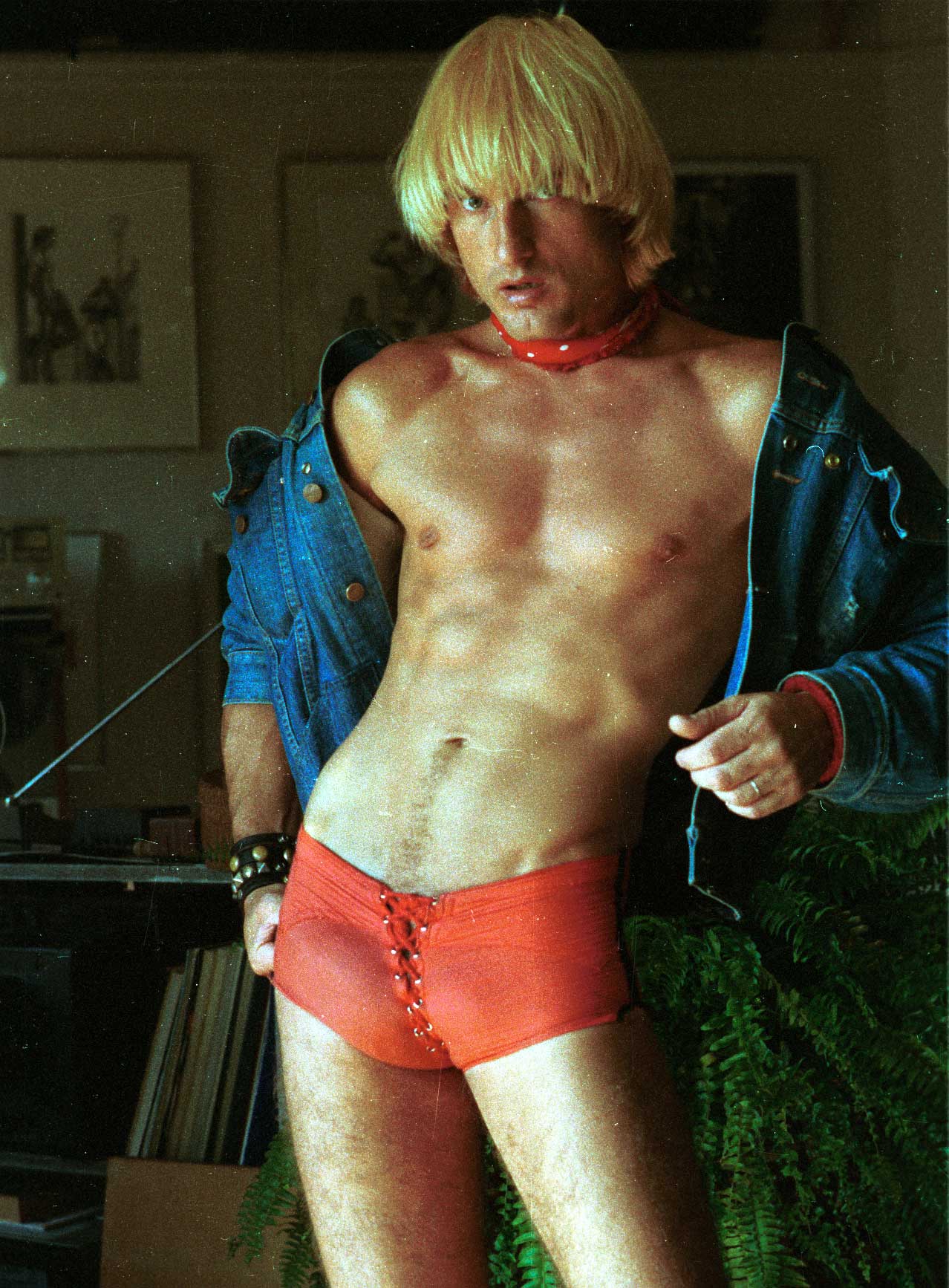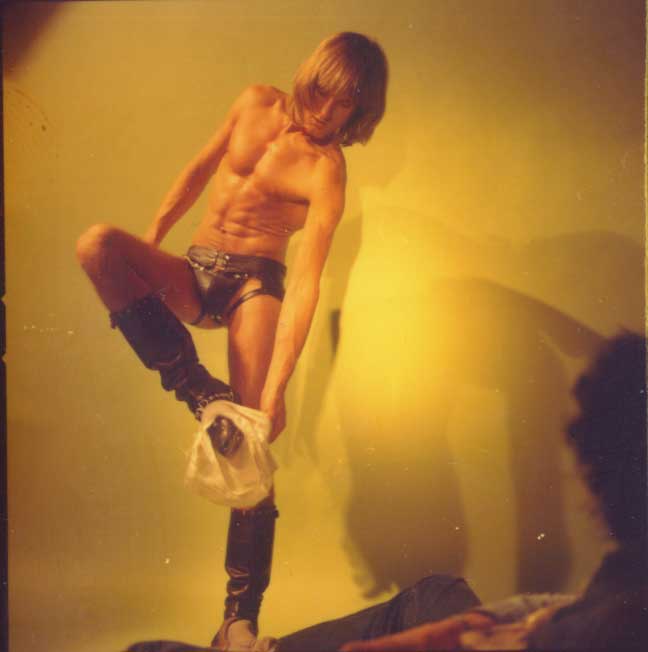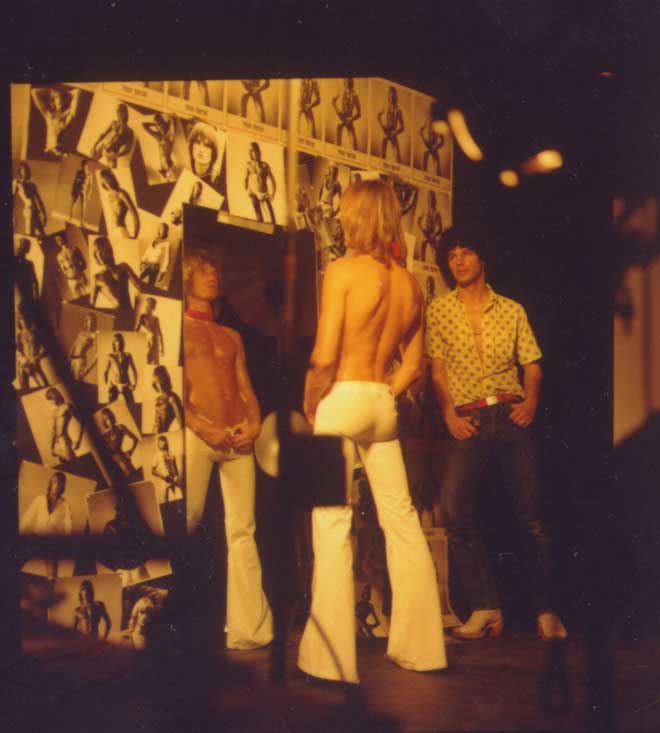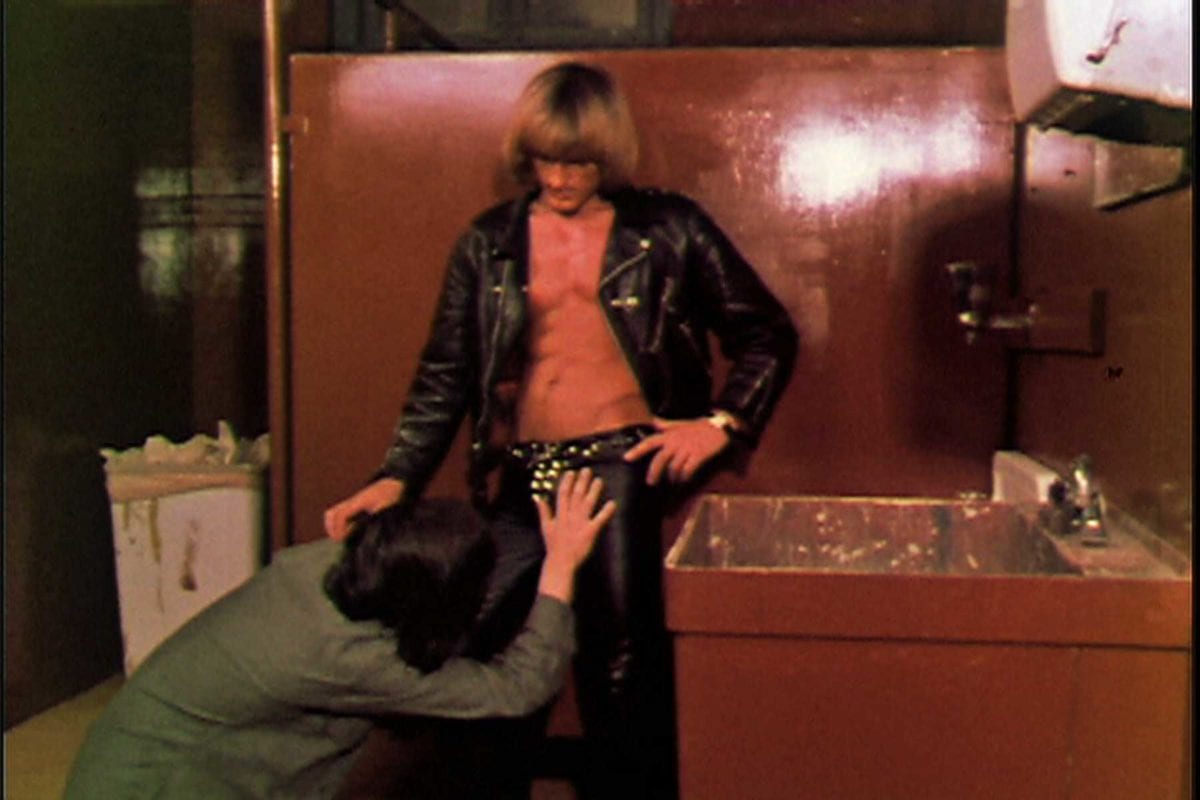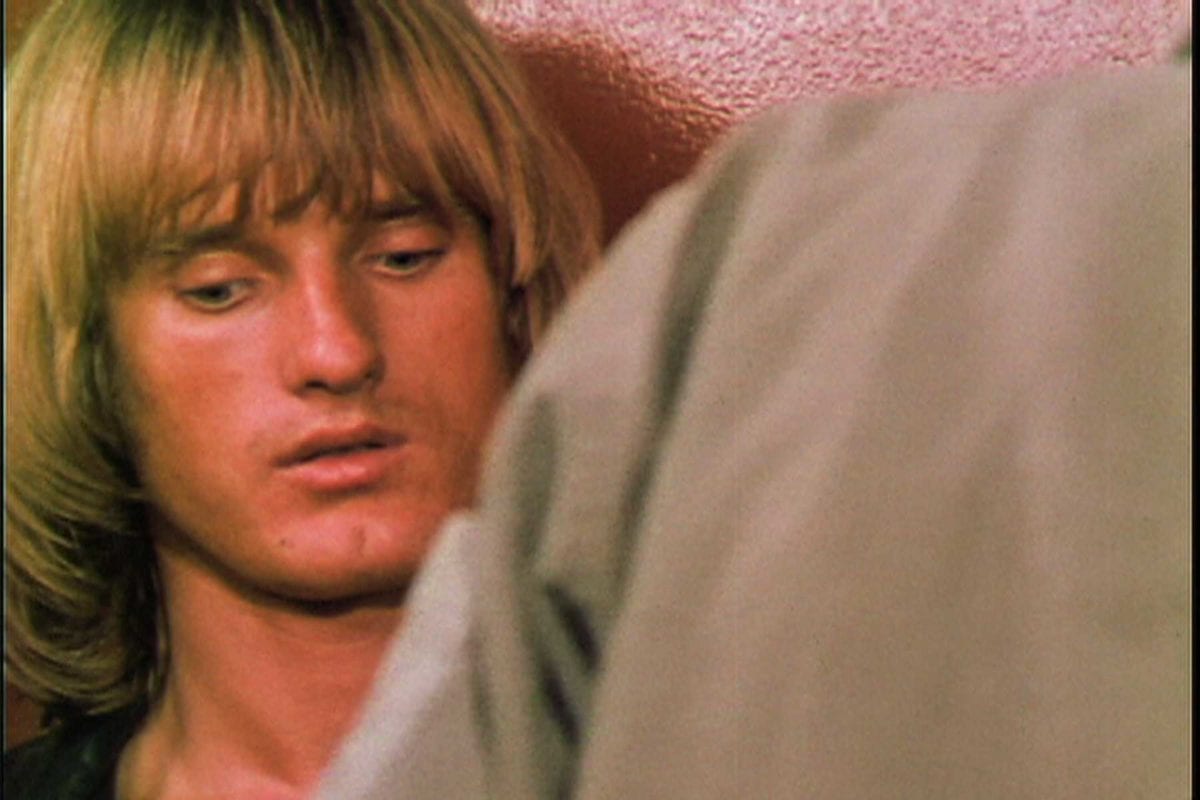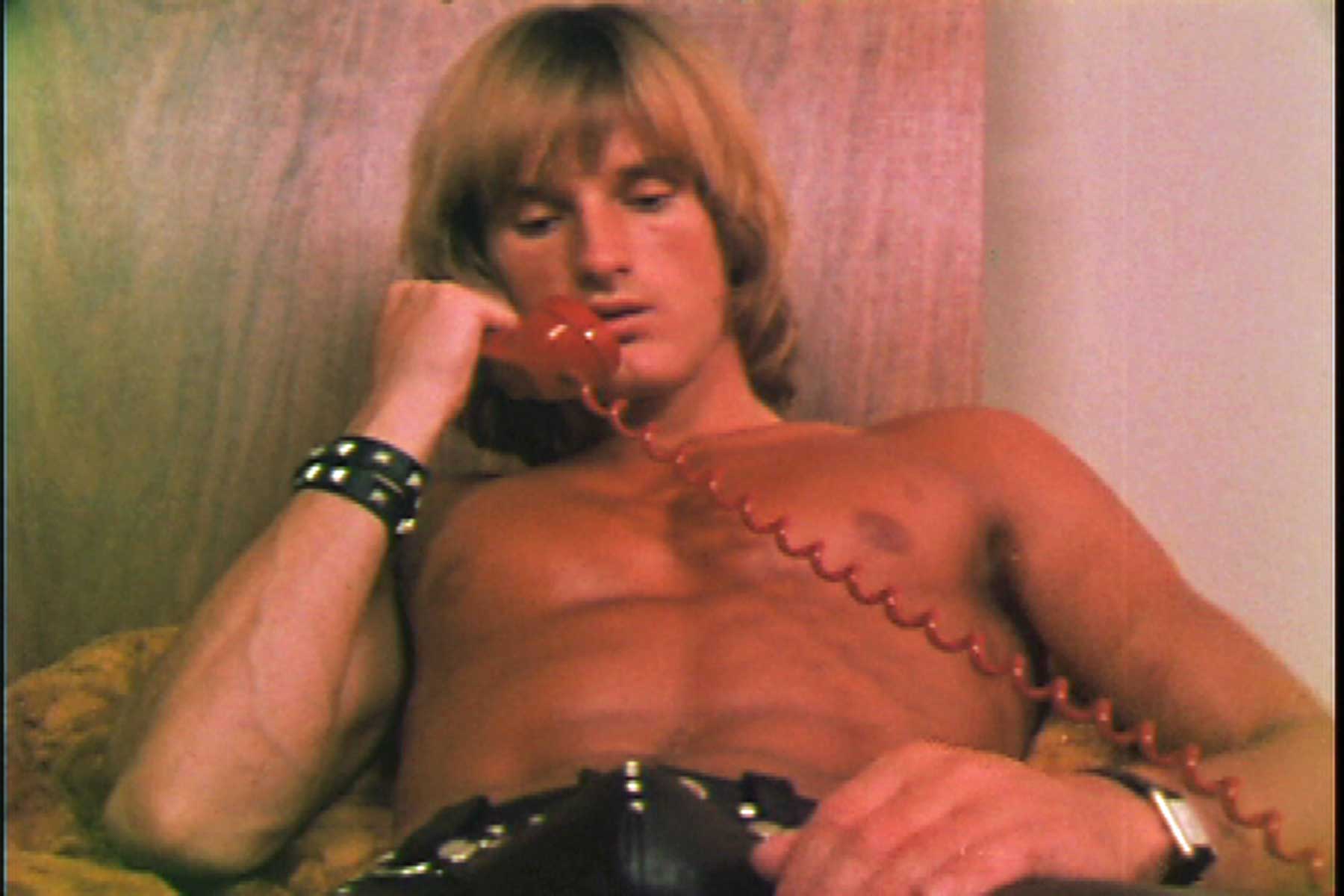
Peter Berlin (real name, the far less snappy Armin Hagen Freiherr von Hoyningen-Huene) is a multifaceted creature: sex symbol, photographer, pornographer, designer, neatly coiffed construct. He was shot by Robert Mapplethorpe and Andy Warhol, drawn by Tom of Finland, pals with Gala and Salvador Dalí. Butt magazine simply described Mr Berlin as a “sixty-something German artist from San Francisco [who] spent his entire life getting laid.”
Characterized by his flaxen locks, Tom of Finland-esque physique and exuberant trouser bulge, Peter Berlin is the ultimate self-starter. When he decided to be a model, he simply took pictures of himself. In becoming a porn actor, he made his own films, starring him. In doing so, he created an entirely new, joyfully narcissistic approach to self-portraiture.
- That Boy, still, film by Peter Berlin, courtesy of Jim Tushinski
While his have-a-go approach to art, pornography and everything in between is admirable, it must surely make for a tricky documentary subject. How do you reveal things about a man who has been so forward thinking and confident, and ultimately controlled in documenting himself? Director Jim Tushinski decided to take on the challenge. It paid off: his 2005 documentary That Man: Peter Berlin is a beautiful, touching thing; tracing not only its star’s 1970s heyday, but also the before and the years since, through with eighteen-months-worth of interviews, a wealth of great footage of Berlin’s films and insights from Peter’s fans including John Waters, novelist Armistead Maupin and seventies porn director Wakefield Poole. Here, Tushinski talks us through why the early seventies were such a fertile ground for experimental and erotic filmmaking, Peter’s legacy and more.
What was Peter Berlin like when you met him? From the doc, I’d have imagined that he might be a little tricky to chat to, having so carefully constructed his own image.
Initially I was pretty nervous: I thought he might be difficult or wouldn’t want to talk, or would want a lot of control. But a lot of time had passed—he really wasn’t Peter Berlin any more. He was still doing videos of himself, but nothing for public consumption. He thought no one would still be interested, so just said “go ahead and do what you want”. I guided the conversation at points but he couldn’t always be guided—he’d just talk about what he wanted to talk about. I wanted to rediscover Peter and let people know about his life: people just knew about his image. His vulnerability and openness was a surprise, but he’s just a human being who’s been through similar things to everyone else. We’re still in contact—not as much as we used to, but we’re still checking in.
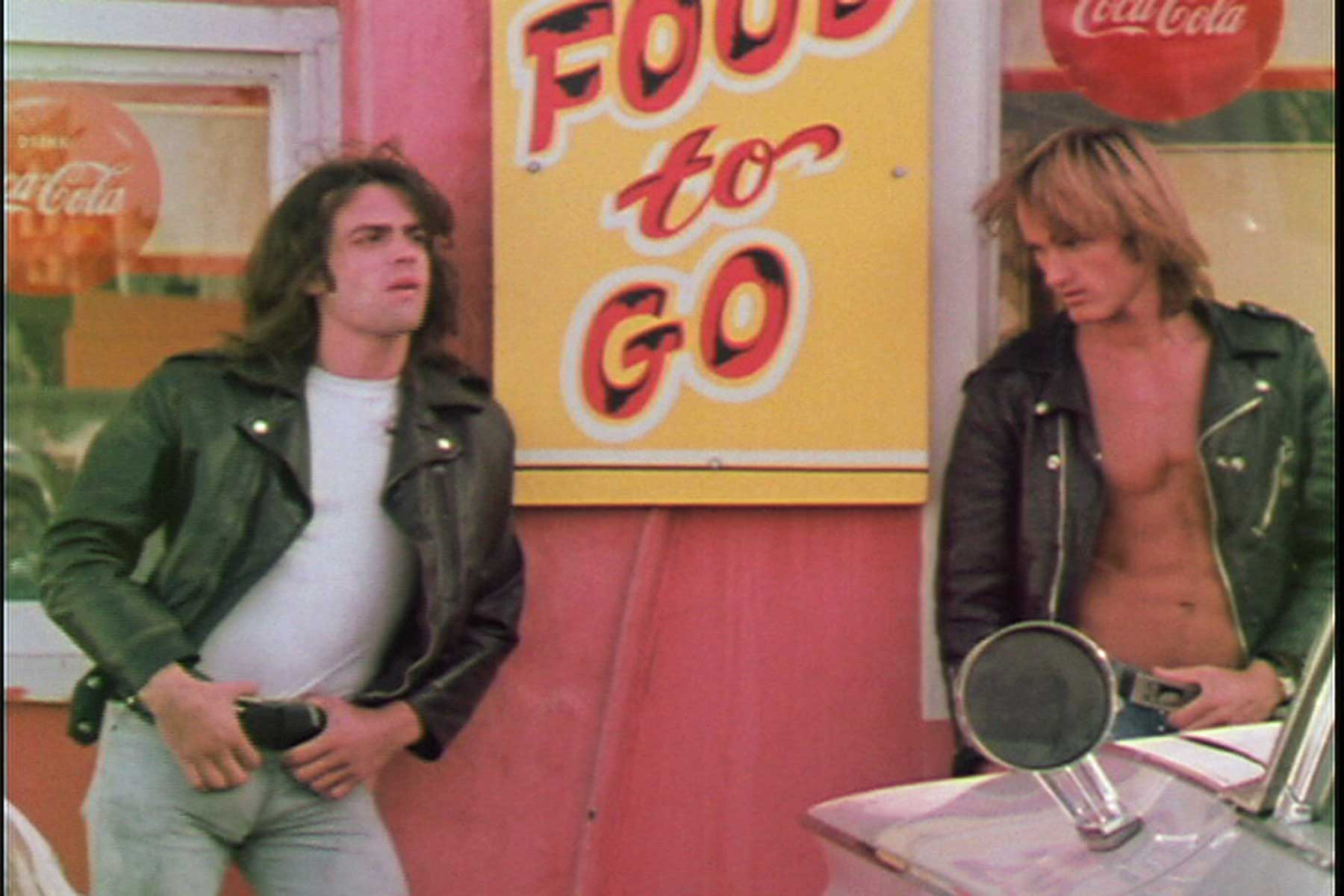
What interests you about the relationship between art-making and sexuality?
I was always interested in what was going on historically and artistically in the early seventies: so much was changing for film and society; so many independent films were being made in New York and some in San Francisco. People just decided to make films and get them out there. The only things getting success were porn, so people were making films and getting them seen and making a lot of money but they were culturally significant at the same time. It’s interesting how the first side of independent films that that allowed for experimentation in the US was porn.
In the early seventies, there was a burgeoning of gay culture so it seemed like the next step—”let’s make movies no one else is showing”. A lot of it was serendipity: in New York there was a whole underground movement with Warhol and Mikas, and New York porn came out of the experimental film aspect of it. Today, it’s an industry—it has to bend to certain rules and things that are expected to make the money. In the early seventies, no one expected to make money; they just wanted to show stuff that hadn’t been shown and be experimental.
People were starting to make films about gay men and their sexuality. These films were sexually explicit, but not porn as we think of it today. A lot of people were making underground films or things they thought would be seen by a very small audience, and the success of those films—Peter’s in particular— took them by surprise. They weren’t expecting them to be an international phenomenon.
- Peter Berlin, courtesy of Jim Tushinski
What else was going on at the time Peter Berlin was famous that paved the way for people like him?
In the early 1970s gay liberation was just starting. It was a rapid succession from Stonewall [the 1969 riots] to some political organizations developing in New York and San Francisco and some of the first gay pride parades happening. There was sort of a different vibe between 1969 and 1970, and that happened very quickly. With publications like The Advocate that there was a way to market to gay men in ways you couldn’t do before.
There had been adult theatres, but those were pretty seedy; suddenly there were outlets and publications and they weren’t really there before. It wasn’t until 1971 with the breakout of [Wakefield Poole’s movie] Boys in the Sand, which became a cultural touchstone—celebrities went to see it, gay people, straight people, couples—and then Deep Throat, suddenly it became cool to go and see porn. The films that came after Boys in the Sand had certain levels of production values that came to be expected, and a certain form of masculinity that was required of the actors. You couldn’t just get away with a hustler you found on the street anyone. People wanted someone with star quality that could attract an audience.
What was Peter’s star quality?
He’s talked about in terms of a Jean Genet sailor, or a European rent boy. He had the long hair, this slight androgynous feel… the masculinity came out from his provocative poses and the clothes he wore showing off his crotch.

What had he put down his trousers?!
Nothing! He would prop it up in a certain way and wore tight trousers! It was tailoring; he would make his own pants to get that crotch to bulge out a little more.
What impact do you think Peter Berlin has had?
He doesn’t think he had much impact at all—he thinks he’s been forgotten. That changed with the documentary. He’s better known now for his photography, not the films he made, so the image is still there. He’s definitely had an influence on fashion: Jean-Paul Gauliter wanted Peter as a spokesmodel at one point. Peter was more interested in looking as good as possible in the clothes he wore than in taking them off. He modified his own clothes, so his look became really important. Fashion picked up on it and never let go: there’s a sexualizing of the male in fashion that’s much more apparent now.
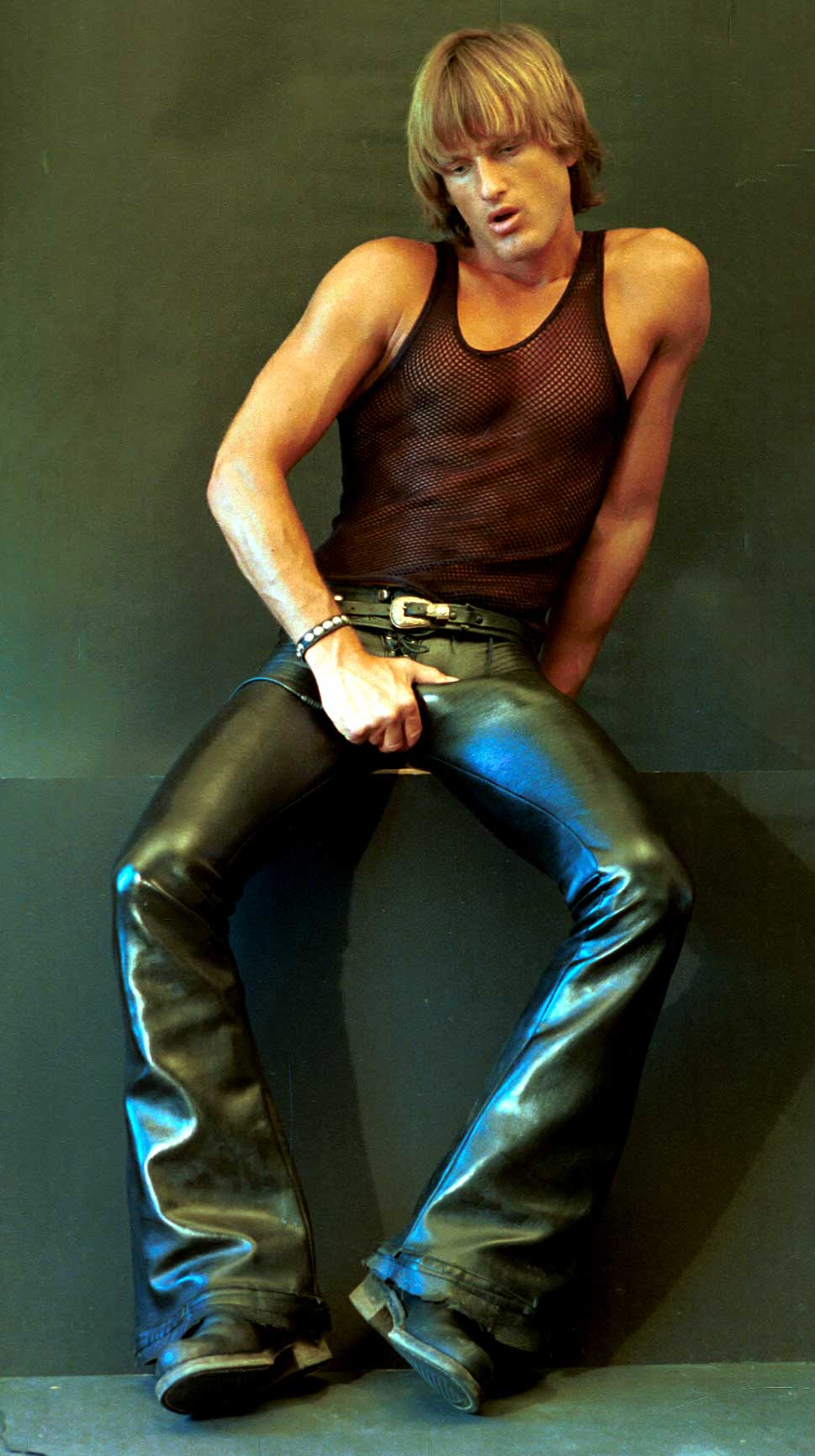
I guess when the eighties came along, that short-lived early seventies period became very much overshadowed by the Aids crisis.
I have a friend who describes the seventies as the Titanic: it was all sailing along just fine and no one saw the iceberg. So much happened in such a short space of time; and then we we had to start all over again in a lot of ways. Peter sort of disappeared at that time, and porn was starting to be looked down on in the mid eighties because there was this weird feeling that porn is “spreading Aids”. A whole generation passed away. Most of the people who knew him and saw his films… most of Peter’s fans died. He became someone who faded from history.
